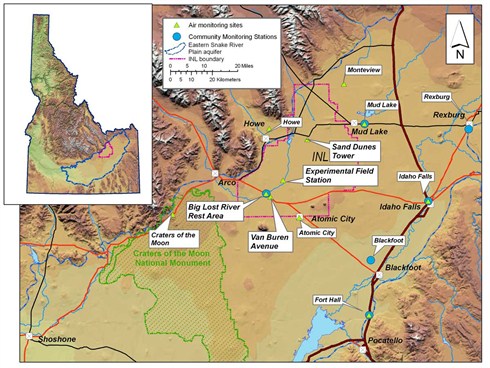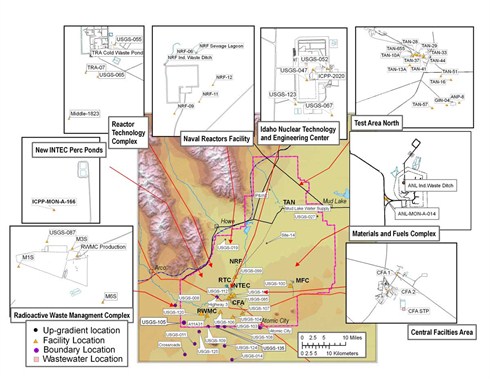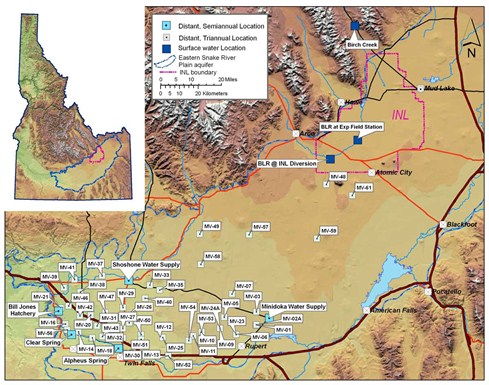Monitoring Locations
Air Monitoring
The INL Oversight Program operates 10 air monitoring stations at and around the INL equipped with particulate air samplers, radioactive gas collectors, and water vapor collectors. Six of these air monitoring stations include precipitation collectors and three are community monitoring stations. Particulate air samples (filters) and radioactive iodine gas samples (charcoal cartridges) are collected weekly to monitor short-term radiological conditions in the environment. Atmospheric moisture is also collected continuously to measure tritium concentrations present in the air. Precipitation samples are collected to monitor for tritium and gamma‑emitting radionuclides that may be present in the environment.
Air Monitoring Locations
Water Monitoring
Contaminants released through infiltration ponds, injections wells, buried waste, or spills at the INL could reach ground water. The INL Oversight program takes samples from more than 126 water monitoring locations along the path of ground water flowing beneath the INL toward the Magic Valley and analyzes them for radioactive contaminants. Samples are taken from wells and springs, streams, and selected wastewater sites. Most water monitoring sites are sampled once a year.
Water Monitoring Locations
Terrestial (Soil and Milk) Monitoring
Radioactive substances can be deposited on soils and foliage where they can be taken up by plants and animals. In addition, radioactive substances can concentrate in the milk of cows and goats that graze on contaminated pastures or feed. When people eat meat, grains milk or vegetables the radioactive material can be absorbed in the body.
The INL Oversight Program uses detailed procedures and advanced equipment to monitor radioactive material in the soil at and around the INL. The measurements taken identify the kinds and amounts of radioactivity in the soil. The measurements also help the INL Oversight Program determine if new sources of radioactivity are being deposited around the INL.
The INL Oversight Program collects monthly milk samples from sources in southern and southeast Idaho. The sampling is designed to detect radioactive material, such as iodine from nuclear reactors, which may have accumulated in milk produced by cows and goats.






